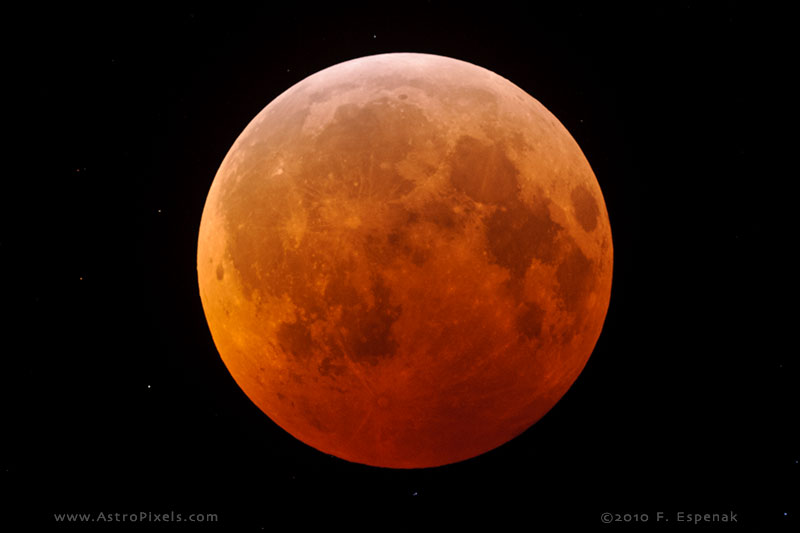|

Photo courtesy of Fred Espenak, www.MrEclipse.com
As darkness falls on Sleeping Bear Dunes National Lakeshore (National Lakeshore), the glorious night sky becomes visible. A four-hour lunar eclipse is the feature for the National Lakeshore’s first Star Party of the year. This unique program will take place during the early morning of Tuesday, April 15, from 1:30-5:30 a.m., at the Dune Climb. Participants are asked to park in the row furthest from the dunes facing M-109. This Star Party could be cancelled during inclement weather; the decision is usually made a few hours in advance. Please call park rangers at 231-326-4700, ext. 5005, for a voicemail message with the decision. All Star Parties are free. Participants need only purchase the Park Entrance Pass or have an Annual Pass displayed in their vehicle to join in the fun. Kids of all ages can participate in the Night Sky Junior Ranger Program. For all evening astronomy events, bring a flashlight for the walk back to your car and bug spray, if needed. Park rangers and Grand Traverse Astronomical Society (GTAS) staff will be wearing red glow bracelets at the events. Two or three lunar eclipses occur each year. A lunar eclipse occurs when the full Moon crosses into the Earth's shadow. The trick to seeing an eclipse is to be on the night time part of the earth when it happens. In this area on April 15, the Moon enters Earth’s outer shadow, called the penumbra, at 12:53 a.m. About 30 to 45-minutes later, when the Moon is deeper into the penumbra, one might notice that the left side (eastern side) of the Moon is darker relative to the opposite side. Sunglasses actually help to view the penumbral stage of the eclipse. The shadow will get increasingly more visible before the partial eclipse starts. The partial phase, when the Moon starts to enter Earth’s inner shadow, begins at about 1:58 a.m. Binoculars or a telescope can be used to watch Earth's shadow cross the features of the Moon. Just after 3:06 a.m., the eclipse will reach totality. By that time, the Moon will be completely immersed in Earth’s inner shadow. Viewing will be quite easy with the naked eye. The Moon will generally be red due to the sunrises and sunsets happening on Earth at the same time. The Moon will begin to emerge from the Earth’s umbra at 4:24 a.m. The ending of the partial phase will be at 5:33 a.m. As long as the skies are clear, the Dune Climb is an excellent location to view this kind of astronomical phenomenon. You can enjoy additional special night sky experiences at the National Lakeshore this year through a series of monthly astronomy programs from April through October. Join park rangers and the GTAS for a guided exploration of our night sky and a few daytime events. For more information about the GTAS, go to http://www.gtastro.org/. Each special event takes place at a different location throughout the National Lakeshore to take advantage of strategic viewing opportunities. Come for star-gazing, eclipses, meteor showers, sun viewing, and storytelling. |
Last updated: April 10, 2015
